Cherry Audio PS-3300’s is a bona fide classic Korg polysynth resurrected for a new era
Only 50 of Korg’s legendary synths were ever made, but now you can own a virtual model thanks to Cherry Audio. And it won’t cost you $40,000, either
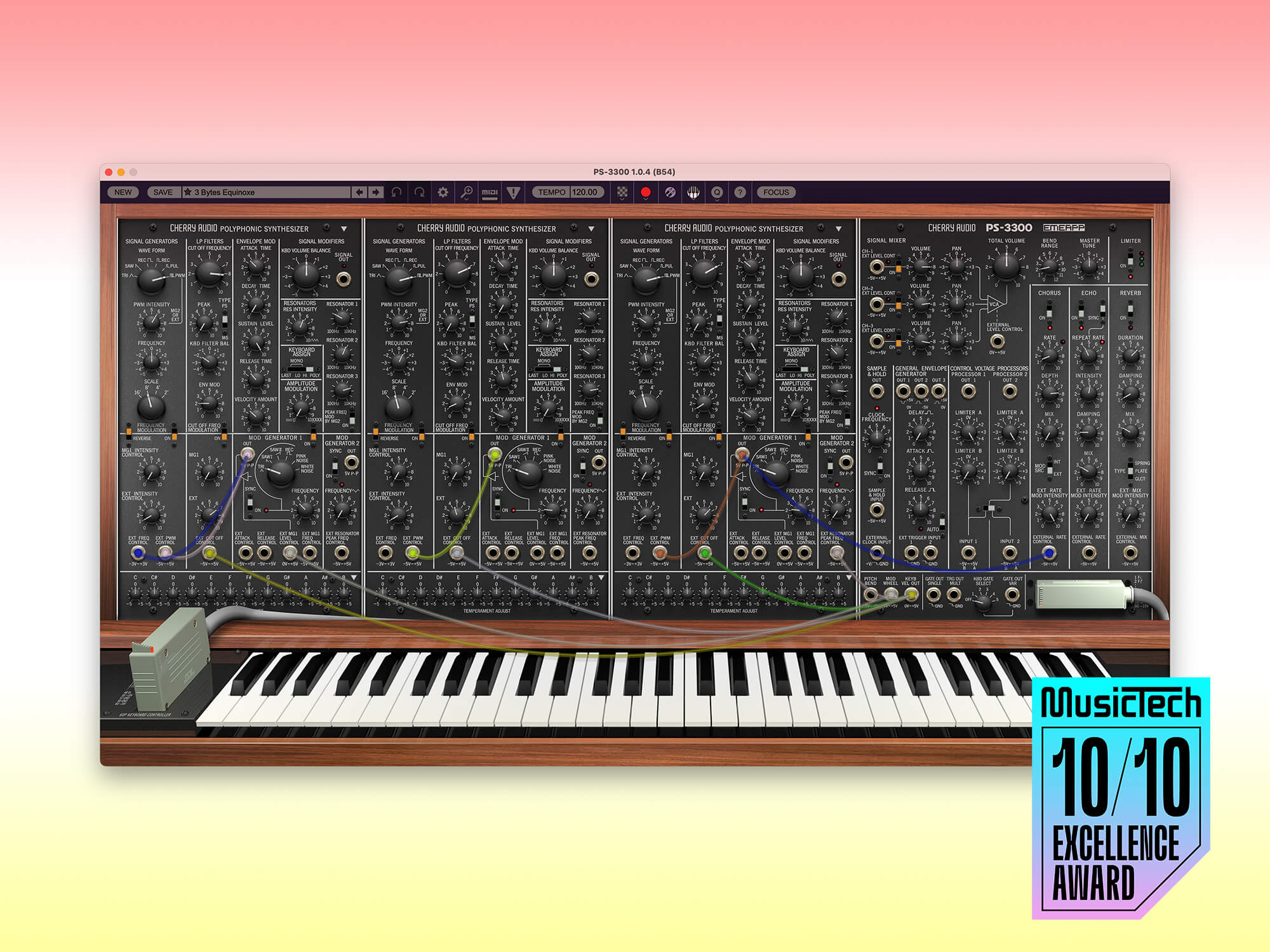
Cherry Audio PS-3300
Review Overview
Our rating
10
Our verdict
⊕ Rich, dynamic and layered sound
⊕ Clever and powerful patching system
⊕ Expanded features versus the original
⊕ Very accessible pricing
⊖ Simpler presets sometimes a little generic-sounding
$49 (street price), cherryaudio.com
Cherry Audio’s relentless pace of releases still shows no signs of slowing, with its latest soft synth excellently recreating a near-mythical hardware unit of which only 50 or so were ever produced.
Released in 1977, the Korg PS-3300 cost $7,500 at the time, which adjusted for inflation is around $40,000 in today’s money. Suffice it to say, the cost and scarcity of units made it available only to a very small but elite and legendary group of musicians – Vangelis, Jean-Michel Jarre, Kraftwerk and later, Aphex Twin, to name a few.
The real deal
Cherry worked with the Electronic Music Education and Preservation Project (EMEAPP) and its original PS-3300 to model this software version which, like all the American developer’s instruments, comes in standalone and all major plugin formats. It also features Cherry’s innovative interface layout including Focus to zoom in on and navigate the interface – particularly useful with this large and busy front panel – as well as up to 4x oversampling, tooltips and a MIDI mapping system for easy management of MIDI assignments.
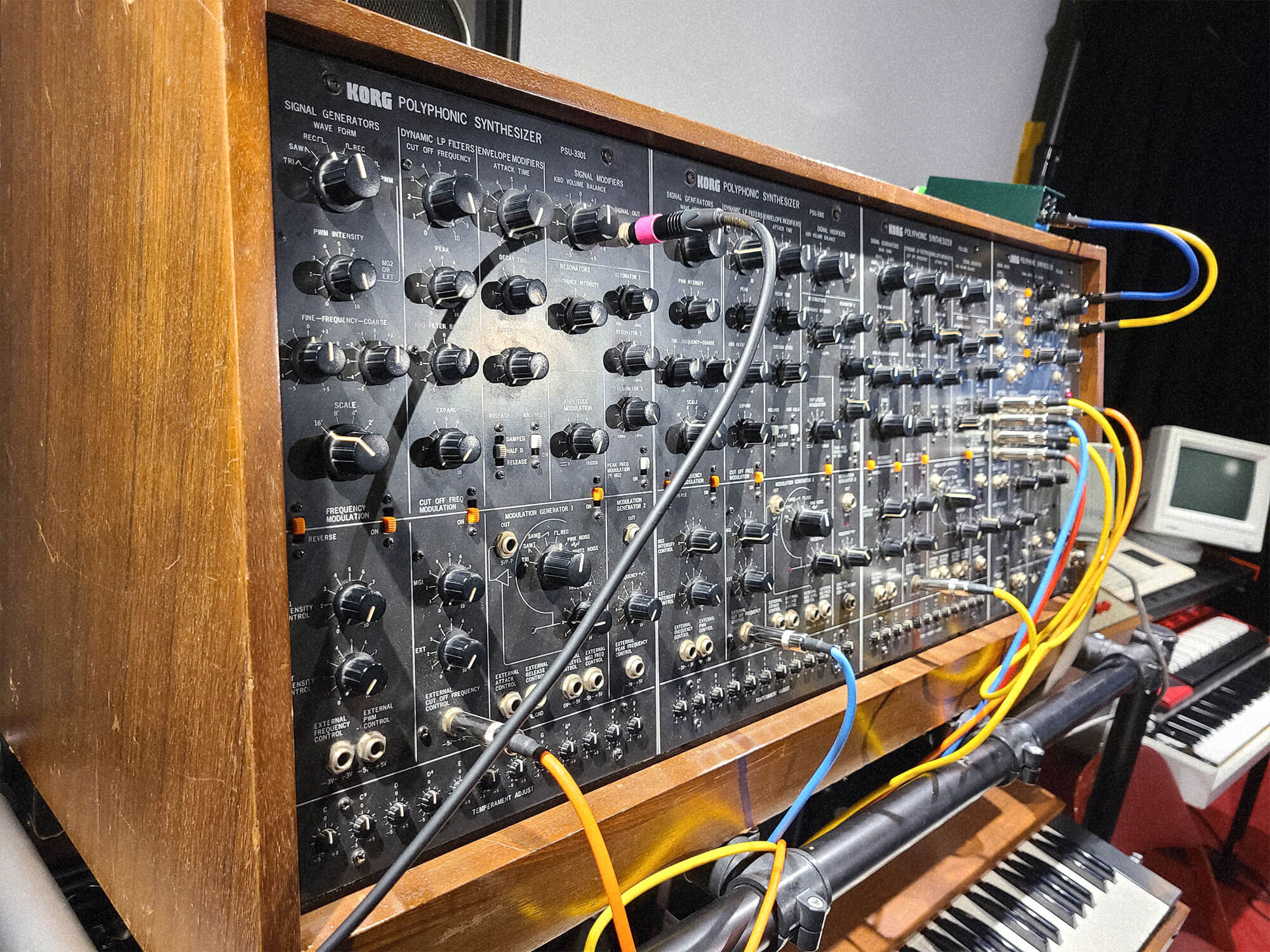
The PS-3300 has some remarkable design features which are even more impressive when you consider the era in which it was built. Not only was it a polysynth in an age of monosynths, but it has three separate ‘signal generator’ panels (what Korg called oscillators), each one a polyphonic synth in its own right. Each included 12 independently tunable, divide-down oscillator banks and an independent, discrete voltage-controlled filter, envelope generator and voltage-controlled amplifier for every note. Incredibly, this meant all 48 keys of the external keyboard could be simultaneously played with distinct articulation.
PS – it’s fat
This three-oscillator design means the synth is especially adept at fat, layered sounds, something that soon becomes clear when you start to play it. Extensive modulation capabilities and free patching mean it’s possible to create dynamic, animated and vibrant patches with multiple elements going on. The best way to think about the synth is as three identical and powerful sections that come together in the mixer and effects sections on the right-hand side. Here, you can set the volume and pan of each one as well as the overall volume, bend range and master tune.
It can be useful when getting to know the synth to pare it down to one engine by turning down the other two. This means you’re not getting multiple types of signals and can better grasp how the changes you make to a single oscillator are affecting the sound. Then, reintroduce the others when you are more familiar with it all.
The excellent introduction and walkthrough videos on Cherry’s website will give you a definite headstart – instead of trying to pick your way around the potentially daunting interface, at least to begin with.
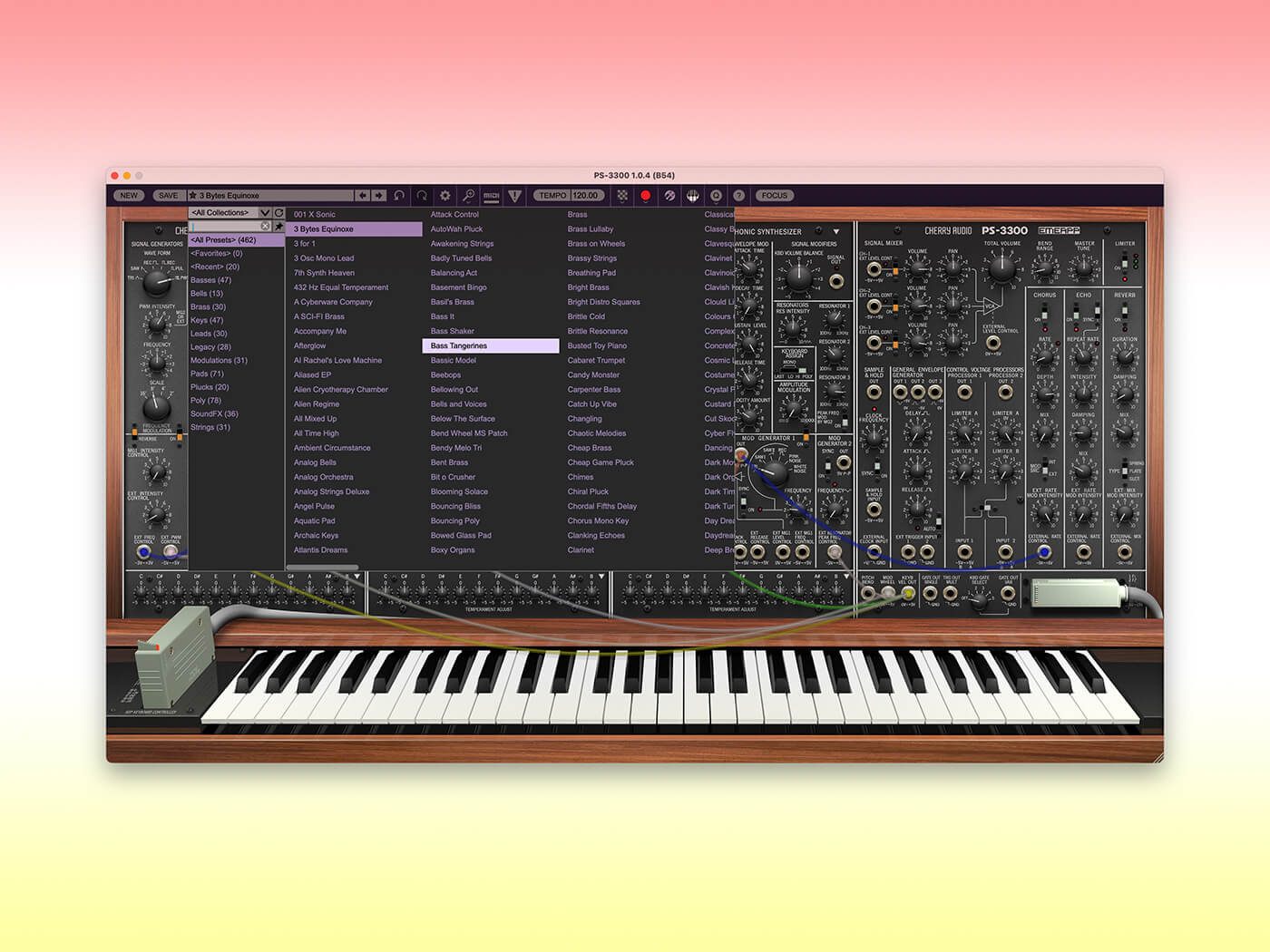
Each of the three sections has a wealth of controls starting with a selection of six waveforms, a low-pass filter, three-peak resonators, an envelope with velocity, an amp, two modulation-generating LFOs and per-note tuning.
The resonators can be used to produce vowel and phasing tones, while the syncable modulation generators can be patched around the instrument to create movement and variation. There’s a clever virtual patch system that we’ve seen in similar designs like software-version ARP and Moog synths, where you can pick up an input or output port and drag a cable to another port to send various kinds of signal.
Like other systems, the cabling here won’t allow you to connect ‘incorrect’ ports, such as an output to an output, so incompatible ports are greyed out when dragging. What’s more unusual is the easy assignability of colours to any cable with variable transparency, to keep you sane when making lots of connections, and that clicking and holding on a connection reveals six virtual ports, meaning you can send that parameter to multiple destinations, even across the three individual sections.
This system is beautifully implemented and a nice alternative to using dropdown menus to achieve the same goal. The patching system will take some time for beginner synthesists to comprehend, since it’s a complex instrument. You can, of course, simply use the presets to experiment, but for those new to modular synthesis, a tour of Cherry Audio’s helpful video will be a worthwhile use of time.
Modern vintage
As is often the case, Cherry has added a few extra touches not found on the original. Principally, an effects section with chorus, echo with sync, three types of reverb and a master limiter.
In addition to having a bunch of their own controls, the effects can receive input from modulation and control voltage (CV) elsewhere in the synth which makes them very flexible. The voice panels are also expanded compared to the original hardware with Korg PS- or MS-style filter selection, tempo sync and temperament tuning presets. Last but not least, you can copy and paste settings between any or all of the panels, potentially saving a huge amount of effort.
Sonically, the PS-3300 is very impressive. Each voice panel can work mono or polyphonically, though we find ourselves mostly in poly mode since we love the rich, layered sounds achievable by blending all three oscillators.
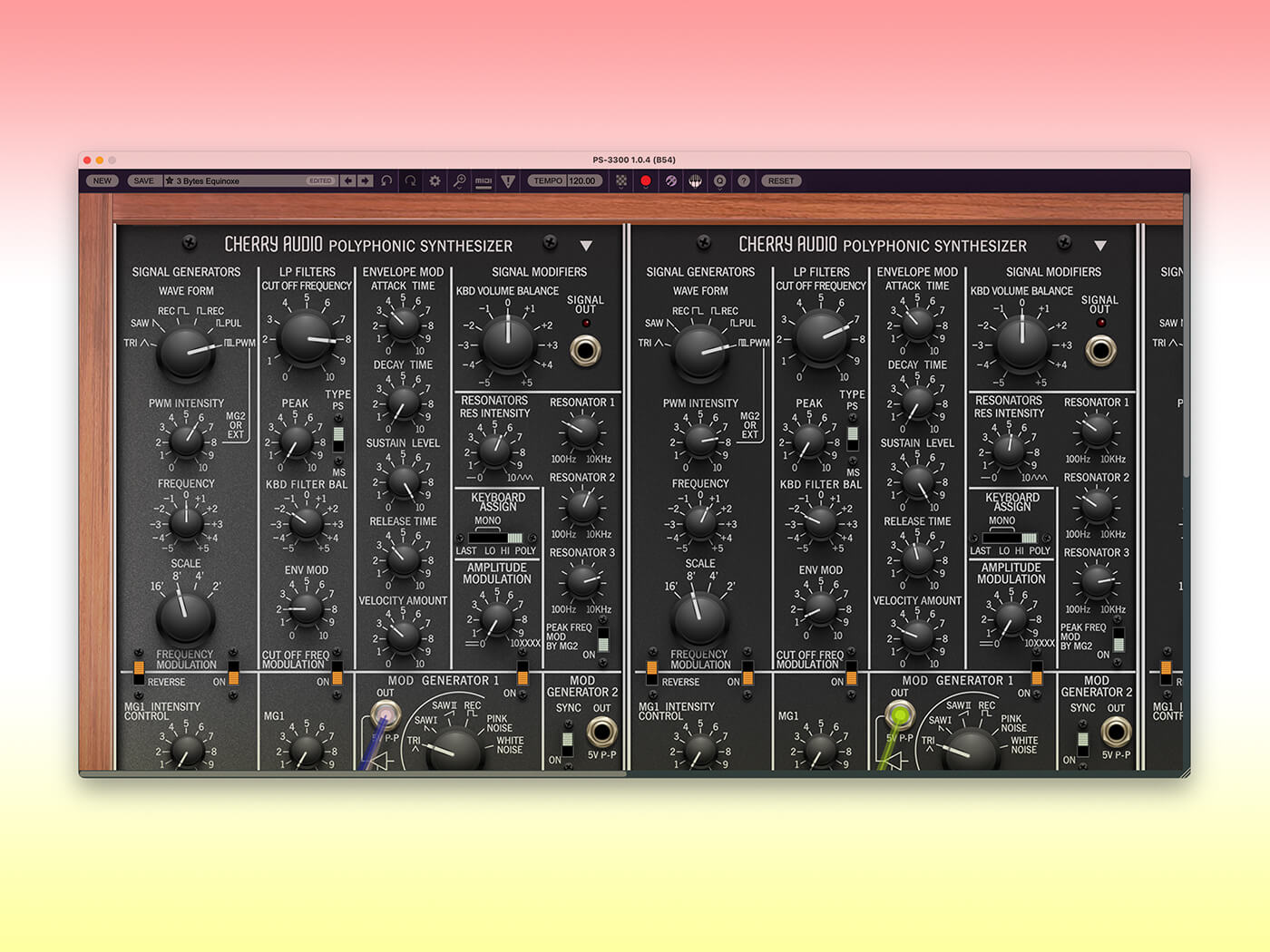
While some of the simpler presets can sound a little generic, as soon as you venture into the layered ones, things step up a gear. In fairness, there’s plenty of useful and exciting patches in the other categories too, with some evil basses, pulsating strings and fierce leads to be found. Given that the PS is vintage, it’s not surprising to discover many sounds are reminiscent of Vangelis or of sci-fi soundtracks, but the crazy depth of editing you can perform makes it suitable for a wide range of applications, from electronic music to scoring and contemporary sound design.
There’s a lot going on in Cherry’s PS-3300 – it is, after all, a recreation of a monster, flagship synthesizer. As such, a less experienced user will want to invest some time in finding their way around but once you think of it in terms of its building blocks rather than one huge panel, it’s easier to make sense of.
There’s a 30-day demo available and then, as usual, there’s Cherry’s ‘how do they do it?’ pricing of $49 which makes it a super low-risk investment for anyone looking to add the sounds of this vintage synth, a unique and versatile polyphonic analogue rarity, to their setup.
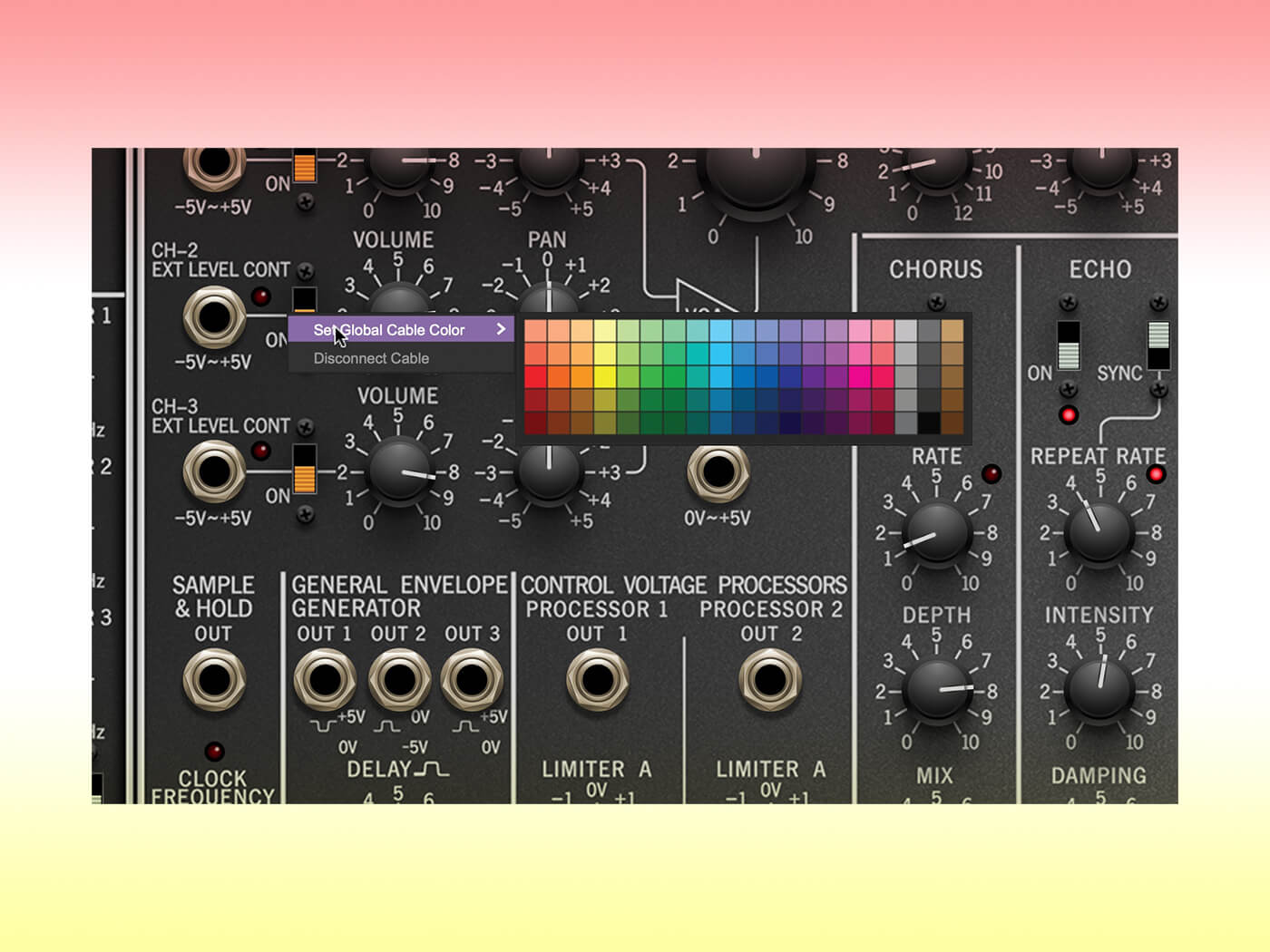
Key features
- Semi-modular synthesizer with virtual jack and cable system
- Standalone and plugin modes
- 3 independent signal generator panels
- Polyphonic mode with up to 24 voices of polyphony and 3 monophonic modes
- Master signal mixer panel with sample & hold, general envelope generator, and two CV processors
- Studio-quality integrated effects
- Complete MIDI control and DAW automation for all controls
- User-selectable bend range and master tune
- Zoom-to-focus user interface
- User-adjustable oversampling control